When it comes to breeding fish, some species make things simple, and those that make it practically impossible in an aquarium setting.
The betta fish (Betta splendens) falls right in the middle.
Do not let that discourage you from trying it! With the proper setup and attention to the conditioning and breeding processes, both expert and novice breeders can see success.
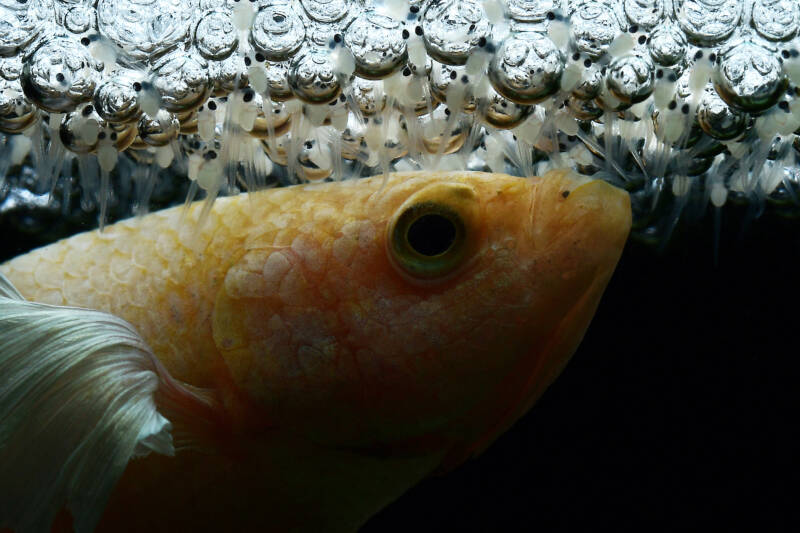
We go into the main considerations in breeding these fish below.
[toc]
Set Up a Breeding Tank
The first step in breeding betta fish is to make sure you have the proper setup.
Do I need a separate tank for fry? Will betta parents eat them?
Yes, to both. An ideal setup is three tanks, one in which to condition the male betta, one for the female, and one for breeding and hatching the fry.
Tank Setup
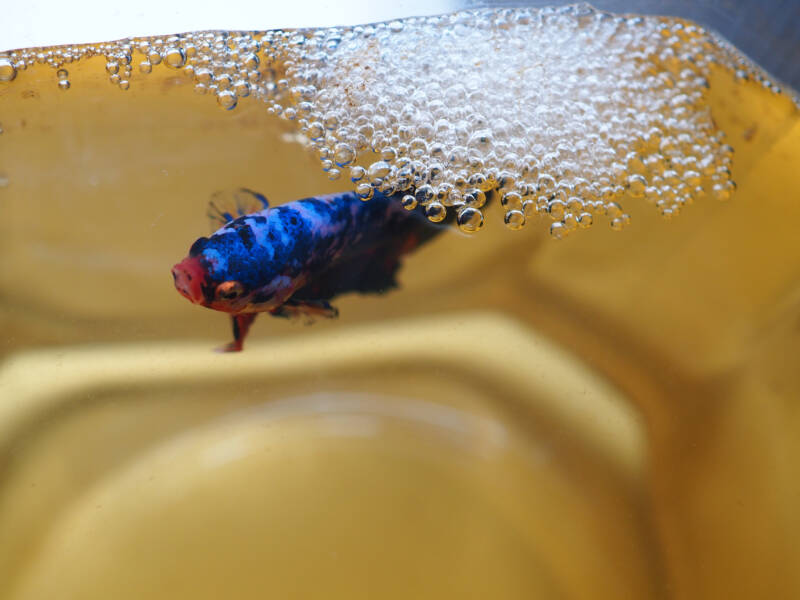
Your breeding tank should be bare on the bottom.
Install a heater and thermometer to keep the water temperature consistent.
Use a sponge filter to keep the water clean without endangering the tiny fry. Add baffling to the filter to reduce the current flow.
Floating plants, such as java moss, give the female a place to hide and rest during the breeding process as well as hiding spaces for the developing fry.
When adding plants, ensure access to the surface for the male to build a bubble nest.
A tank divider is useful when first introducing the betta fish. It allows them to become accustomed to each other without the threat of aggression.
Have plastic wrap on hand to cover the top of the tank once the eggs have been laid. This will increase the humidity in the tank and aid in development of the eggs.
Water Parameters
The water should mimic seasonal shifts that bettas would experience in the wild in Thailand.
Breeding time is usually from spring to summer during the rainy season.
Ideal conditions are slightly acidic, warm, and soft.
- Temperature: 80°F (26.6°C)
- pH: 6.5
- Hardness: 4 to 8 dGH
Fill the breeding tank with five inches of conditioned water.
Adding Indian almond leaves will lower the pH and bring antibacterial/antifungal benefits.
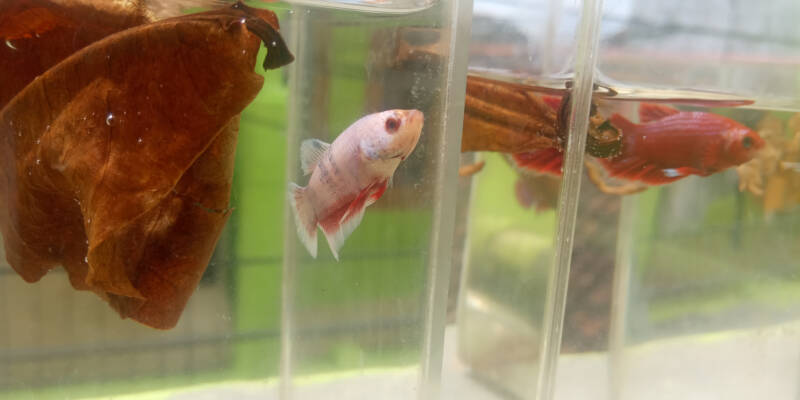
It is critically important to maintain water cleanliness during this time. Use a test kit to routinely measure ammonia, nitrite, and nitrate levels.
Change out a portion of the water (around 25%) twice a week.
Selecting Your Male and Female Betta
Now that your equipment is ready, you can select which fish to breed.
Choose those with bright, healthy coloration and an energetic disposition. Dull-colored and listless fish have a reduced chance of successfully mating.
Make sure your fish match in size or choose a female slightly smaller than the male.
How old do bettas have to be to breed?
Bettas should be between the age of four and twelve months. Anything outside of this range has a reduced chance of success.
Conditioning Your Bettas
Place your male and female bettas in their respective tanks and begin to condition them for mating.
How long does it take for betta fish to have babies?
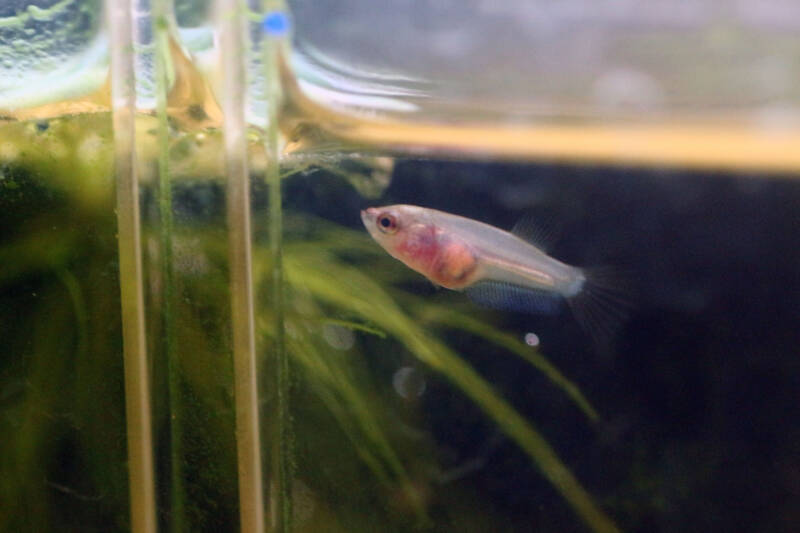
Plan on a two to four-week period to get your bettas ready for breeding.
Once the fish are ready, the spawning process takes between 24 and 36 hours.
Feeding
Feed your fish meals that are smaller than usual but increase the frequency to three or four meals every day.
One of these meals should be their usual flake or pellet food.
The remaining meals should be nutrient-rich foods to support the growth of eggs.
Try live or frozen foods, such as bloodworms, tubifex, brine shrimp, and mosquito larvae.
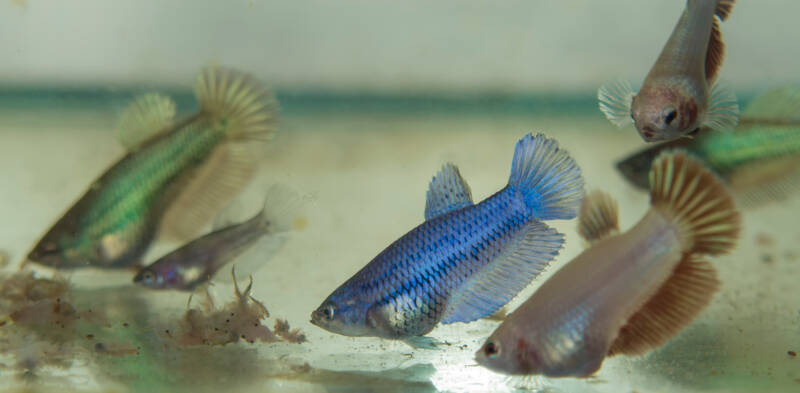
Introducing Your Betta Fish
In the wild, these fish do not inhabit the same location together for an extended period.
They come together to mate, and the female departs shortly after, leaving the male to care for the newly fertilized eggs.
Introduce your fish to each other slowly.
Place your female in the breeding tank first and let her acclimate before introducing the male betta on the other side of the divider.
This introduction encourages the female to produce eggs and the male to build a bubble nest without the threat of aggression if they are in direct contact with each other.
Are Your Bettas Ready to Breed?
To determine if your betta fish are ready to breed, look for physical and behavioral indicators.
How do you know a betta fish is pregnant?
The first thing to know is that betta fish do not actually get “pregnant,” meaning they do not carry or give birth to live young.
They are a spawning species, with the female releasing eggs that are subsequently fertilized by the male.
The biological term for a female fish carrying eggs is “gravid.”
Physical Indicators
What do female betta fish look like when they are pregnant?
Look for five to six vertical stripes on your female to indicate she is ready to produce eggs.
These will not be perfectly straight, but more like swaths of lighter color on her body.
Not every female displays these stripes, however, so look for other signs as well.
When she is ready to reproduce, you may notice a white spot just behind her ventral fins. This is the ovipositor, or egg spot.
Do all female bettas have egg spots?
Yes. This special part of her anatomy is the tube from which she will release her eggs.
How can you tell if your female betta has eggs?
A gravid betta fish can appear rounded in the belly and bloated. Her ovipositor will protrude slightly. Look at your fish from above to see the rounding best.
Note that the bloating due to your female being gravid is mild and should present more to the sides than downward.
A heavily rounded abdomen on your female in the absence of light stripes and a white spot on her belly may indicate that your fish has another condition, such as constipation or dropsy.
For how long do betta fish stay pregnant?
A female betta can retain eggs for one to two weeks.
A male ready to mate can appear vividly colored, especially when first introduced to the female.
However, this color change will not occur until the female and male occupy the same tank.
Behavioral Indicators
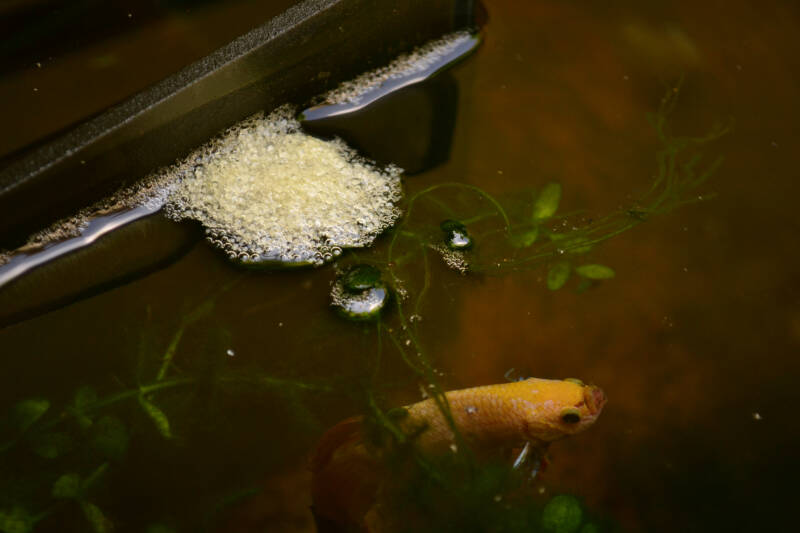
Shortly after introduction, the male should begin construction of the bubble nest. This procedure can take 12 to 24 hours.
What is a bubble nest?
A nest in which to raise young that is made from bubbles.
Because bettas inhabit slow-moving waters with reduced oxygen levels, these bubble nests provide extra oxygen to the developing young.
Should I remove a betta bubble nest?
Only if you do not want baby bettas.
The nest is critical for the development of the eggs and fry.
If you are not ready to breed your bettas and you remove the nest as part of your routine tank cleaning, do not worry. Your male will build another.
Spawning Process
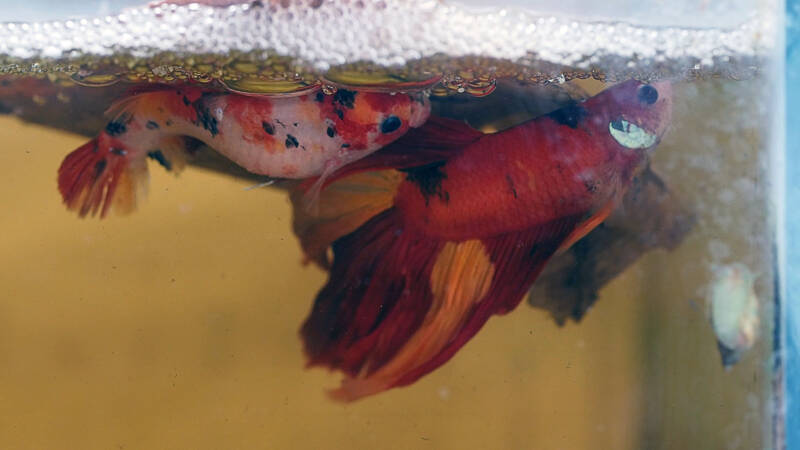
Once the nest is complete, you can release the female betta, who will decide if the nest looks right to her.
If it does not pass inspection, she may swim away or destroy the nest. If the nest suits her, she will permit mating to continue.
The fish will begin to chase around the tank. This part of the spawning process can appear aggressive, so keep an eye on things and be prepared to remove the female if necessary.
Eventually, the fish will swim side by side, flaring their fins.
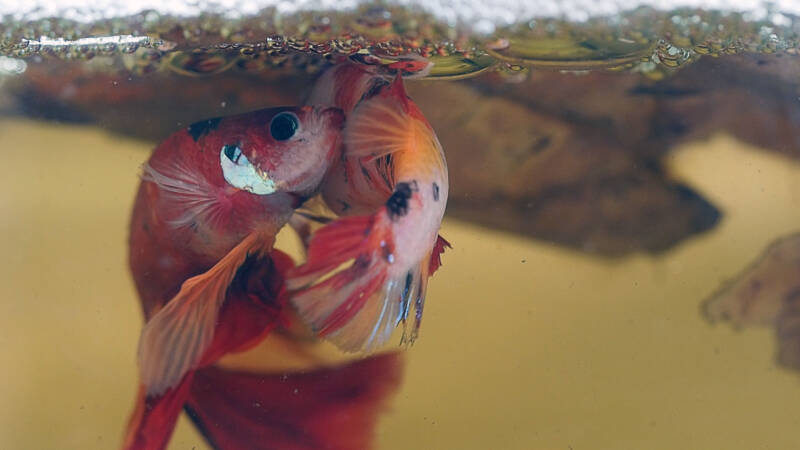
How many eggs does a female betta fish lay?
They can lay a range of numbers, from as low as 20 to as high as 500.
When this activity finishes, remove the female from the breeding tank as the male will vigorously defend the eggs, including against mom.
Betta Eggs

The male betta will collect the eggs and bring them to the bubble nest, where he will fertilize them.
Over the next three days, he will care for the eggs by guarding them and replacing any that fall from the nest.
He may eat any eggs that are unfertilized or are not developing.
What color are betta fish eggs?
The eggs will be milky white and unevenly rounded. Fertilized eggs will develop dark flecks of color.
Can female betta fish lay eggs without a male?
Yes. However, in most cases, the female will reabsorb the eggs.
Any eggs she expels will be unfertilized and will sink to the tank bottom.
If she does not absorb them, she can become egg-bound. An egg-bound female is one that has not released unfertilized eggs.
This condition can lead to infection and should be treated by ensuring proper diet and placing her near a male to encourage her to release the eggs.
Betta Fry Care and Feeding
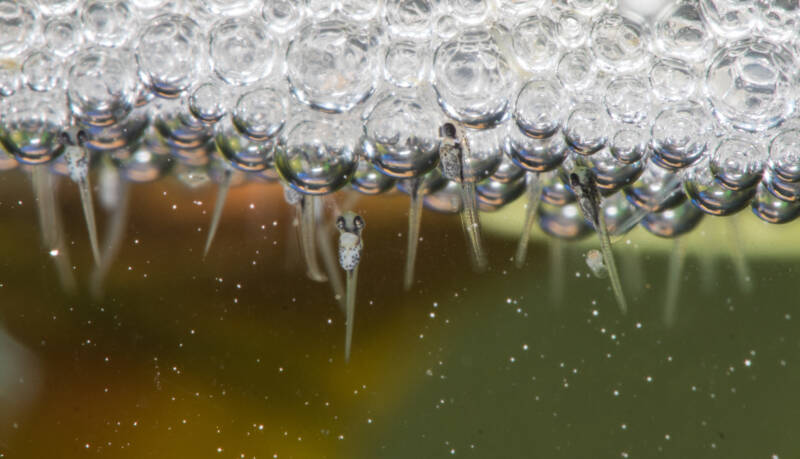
For the first 24 hours, they stay with and absorb their yolk sacs.
After that, they remain with the bubble nest for about 36 hours to take advantage of the oxygen.
Some may fall from the nest during this time, and the male will retrieve them. The fry will emerge after three days.
Within three to four days, the fry will be free swimming. At that time, remove the male from the breeding tank as there is a chance he may eat the fry.
Begin to feed the fry small-sized foods, such as infusoria, baby brine shrimp, vinegar eels, and microworms.
How many betta fry will survive?
Betta fry are robust, and with proper care, you can expect around 90 percent of them to survive.
What age do betta fry get color?
Betta fry will develop their color at around eight weeks.
Keep the fry in the breeding tank for three to four weeks before transferring them to a grow-out tank.
The fry will be fully developed fish in three to four months.
Closing Thoughts
With a little preparation and diligence, breeding betta fish is a fun and rewarding activity.
Remember that proper tank setup, a controlled introduction, and quality nutrition are the keys to seeing a wiggling batch of baby bettas!
Drop us a message below and let us know your experience with breeding bettas.
What methods have worked best for you?
